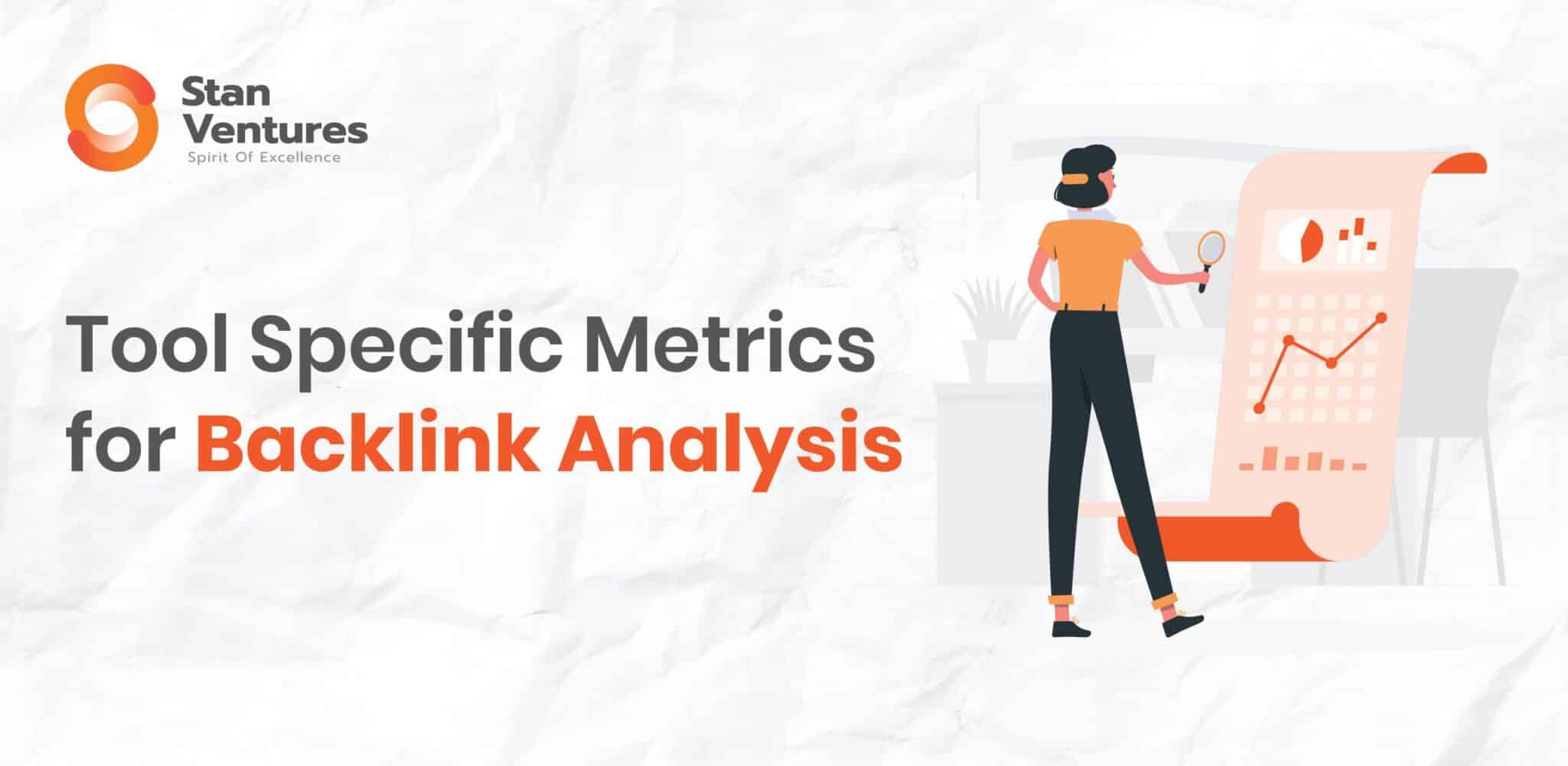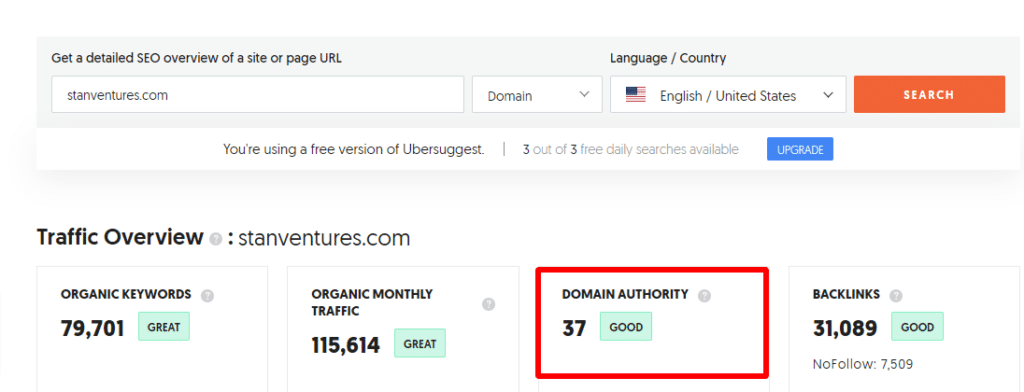Tool Specific Metrics for Backlink Analysis
Link building is an important part of search engine optimization. Links to your site lend credibility to it. Since Google aims to provide users with the most relevant results, it factors in credibility when deciding which sites are most...

Link building is an important part of search engine optimization. Links to your site lend credibility to it. Since Google aims to provide users with the most relevant results, it factors in credibility when deciding which sites are most relevant. The more high-quality links pointing to your site, the higher will be your credibility factor.
If you don’t build links, you’re leaving the door open for your competitors to outrank you. Links to your site are extremely important to Google, and it’s almost impossible for Google to rank your site if it has no links pointing to it. It’s a numbers game; you need more backlinks than your competitors do if you want to rank above them.
A number of SEO tools have introduced metrics that can help you analyze your link-building success. These metrics also help you track changes in your backlink profile over time. This post will list some of the top link-building-related metrics introduced by top SEO tools and discuss their importance in detail.
Tool Specific Metrics
1. Semrush
Domain Authority Score
The domain authority score is a metric by SEMrush to measure the overall quality of a web page and SEO performance. The score is based on several factors that represent authority and trustworthiness. The accuracy of the score is maintained using a neural network and machine learning.
The calculation is carried out in two steps:
Step 1: SEMrush’s machine learning algorithm uses backlink data, organic search data and website traffic data to analyze and understand the rankings of the most popular and trusted domains on the web.
Step 2: The other algorithm uses backlink data to analyze how a website increases or decreases its authority while gaining links. The value is measured on a scale of 0-100. There are only a handful of domains on the web with domain authority scores up to 98 or 99.
The metrics considered for this calculation are:
The number of referring domains pointing to the site The number of outbound links from each referring domain The total number of backlinks pointing to the site The authority of each referring domain Follow vs. nofollow links pointing to the site (inbound links) Follow vs. nofollow links pointing away from the site (outbound links) The number of referring IPs pointing to the site The number of referring subnets pointing to the siteThe authority score of a web page or domain is an indicator of its overall quality. Authority score can prove helpful when you’re looking for quality domains to improve your website authority by tweaking your SEO strategy. Some ways in which the domain authority score can support your SEO effort are:
Analyzing link-building prospects Competitor analysis Scrutinizing domains you’d like to buy Watching out for negative SEO Tracking your SEO efforts over timeToxicity Score
SEMrush’s backlink audit tool sorts all toxic backlinks based on their toxicity score. The toxic score is determined by more than 50 different parameters that SEMrush uses to assess the harmfulness of a link. The links with the highest toxic scores will be shown on the first page.
When you find a link with a high toxic score, you may want to send it to your disavow list. The disavow list can be sent to Google so that those links in the list can be disassociated from your site. If you find a link that has a low toxic score, you can add it to your whitelist. A whitelisted link is the one you want to keep on your website. You can also use the Toxic Marker filters in the tool to narrow your list of audited links.
For example, you may want to shortlist URLs coming from pages with spam TLDs (top-level domains), and the tool will automatically filter out these results. The Target URL Error filter feature allows you to look for broken links in your profile that you can fix or redirect later.
2. Ahrefs
URL Rating
The URL rating shows a page’s link profile strength, measured on a 100-point logarithmic scale. URL rating is a page-level metric, while domain rating is a domain-level metric. It considers both internal and external links, but they are weighted differently. If you put your website into the Ahrefs URL Rating tool, you will get the URL of that homepage alone.
The UR has a strong correlation with Google rankings, where high UR pages tend to rank higher on Google search results. Ahrefs uses Google’s PageRank formula to determine its URL Raring. Ahrefs URL Rating is calculated based on the following:
Links between pages Considering the “nofollow” attribute Following a “damping factor” Deep crawling web pagesHowever, it should be noted that Ahrefs UR should not be considered a substitute for Google’s PageRank formula. PageRank has evolved much since its inception compared to UR, which is more simplistic.
Domain Rating
Domain Rating (DR) is a logarithmic scale of 0-100 that specifies the strength of a target website’s backlink profile and is used to assess the relative link popularity of a given website. It is also useful as a metric that estimates how well a website can get search traffic from Google.
3. UberSuggest
Domain Authority
Domain Authority is a score based on the number of relevant backlinks to your site. It is determined on a logarithmic scale. Moz initially created the Domain Authority metric to help businesses where they may rank on Google search results. A page’s possible ranking is estimated via several channels, including linking root domains and the number of total links into a single domain. UberSuggest’s Domain Authority uses the same metrics as Moz to determine a website’s DA score.
4. Moz
Domain Authority
Domain authority (DA) is a ranking score developed by Moz. It measures how likely a website can rank on SERP and is measured on a scale of 1 to 100. You can check DA using Moz’s Link Explorer, MozBar (Moz’s free SEO toolbar), or in the SERP Analysis section of Keyword Explorer.
Sites with many high-quality, relevant backlinks will be on the top of the Domain Authority scale, whereas websites with fewer backlinks will have a much lower DA score. New websites will always have a DA score of one. The best way to influence Domain Authority is to improve your overall SEO.
Page Authority
Page Authority is a score developed by Moz that predicts how well a specific page will rank on search engine results pages (SERPs). The higher the score, the greater the ability of a web page to rank.
Page Authority is calculated based on the Mozscape web index, link count, and more than 40 factors. Since Page Authority is calculated using a machine learning algorithm, it can change as the data fed into it changes.
5. Majestic
Trust Flow
The trust flow is a metric introduced by Majestic that measures the trustworthiness of a website. If an authoritative and high-quality website links to your site, it will increase your trust flow. Most SEOs consider any site with a trust flow below 15 as untrustworthy. However, a good trust flow is harder to get than a citation flow because you can get a lot of links, but not all of them will be relevant to your site.
Topical Trust Flow
Trust Flow indicates how authoritative or trustworthy a domain or URL is within its niche and what topic the content is about. The content that links to a page helps determine its Trust Flow, so the more referring domains, the more accurate the Trust Flow is.
Citation Flow Link Graph
A link Graph is a visual map of the immediate network surrounding a URL or website. The link graph will help you in the following ways:
Find how close your sites are to Link Networks Check the authenticity of the network around potential domain name purchases See which of your competitor’s 2nd and 3rd Tier links are working best Find which deleted links were bringing the most link juice Use filters to choose your own Link Graph viewLink Profile Fight
The Link Profile Fight feature of the Majestic tool allows you to compare the flow metrics of two sites. You can find the option on Majestic’s homepage. To compare the backlinks of any two sites, choose External Backlink Profile or Referring Domain as the option. The result of your Link Profile Fight will be presented in graphs. Using this feature, you can compare the Trust Flow, Citation Flow, number of referring domains, external backlinks and indexed URLs between two different sites.
Generic Link Metrics
Follow vs. No-follow
When one website links to another, it is a do-follow link by default. This allows search engine spiders to crawl the web and understand who links to whom. The site authority or “link juice” is passed from one site to another through this process.
On the other hand, a no-follow link includes a small piece of code called an attribute that lets search engine bots know not to follow the link. It looks like this: rel= “nofollow”. Google states that no-follow links do not pass any link juice or PageRank to the website being linked to. This means that if these links point to your website, they do not directly affect your site’s position in the SERPs.
Backlinks Type
Backlinks are the way to go in terms of getting your site ranked higher on search engines. There are different types of backlinks that you can earn from other sites, like editorial backlinks, backlinks from guest posts, webinars, backlinks from guest post bios, comment backlinks and acknowledgment backlinks.
Most backlinks improve the quality of your site, but some can really hamper its performance. The main factors that influence the quality of links on your site are the authority of the linking site, whether the linking site gives a do-follow link and the link’s location on your site. Place do-follow links contextually in your body content to maximize your SEO benefits.
PageRank
Google’s PageRank is an algorithm that determines the importance of websites by determining the quality and quantity of links on the site.
Top Anchors
When an anchor text appears in the first paragraph of a piece of content, it carries more weight than an anchor text placed at the end.
Referring Domains
Referring domains are external websites that link visitors to your site. To see which sites are linking to you, use Ahrefs Site Explorer’s referring domains report.
Top Indexed Pages (by the number of backlinks)
A top-indexed page is a web page frequently crawled and indexed by search engine spiders.
Root Domains
Majestic Site Explorer allows you to see sites on the root domain. The root domain is the top-level structure of your website; it contains all subdomains and every other URL. You can access data from an entire site using it.
C-blocks
The idea behind a C-block is that if the first 3 bytes of the IP address are identical, then the two IP addresses will likely be in the same C-block. When this happens, the sites are related, and hence the links between these sites should not count as strongly in terms of PageRank.
Domain Strength
Domain strength is a metric used to indicate how strong a particular domain is in its niche, so you can analyze how important a link from that site would be or how difficult it would be to compete with a site of that strength.
Page Strength
SEOMoz developed the Page Strength metric. This metric allows you to determine the relative importance or visibility of a web page, its ability to rank on search engine result pages (SERPs) and data on popularity, links or mentions of the page across the web. It is an alternative to PageRank, another metric used to measure the importance of a web page.
The page strength metric uses the following factors in determining a score:
Links pointing to full URL Links pointing to the domain Position at Google for the first four words of the title tag on the target URL Age of Domain Links from domains with .edu TLDs Links from domains with .gov TLDs Alexa Rank Domain name visibility Internal Link Percent Number of search results for URL search at del.icio.us Listings in DMOZ (ODP) Links found in Wikipedia Google Pagerank of full URL and DomainAnchor Text
The clickable text in a hyperlink is called anchor text. Google has set strict guidelines for anchor text and penalizes sites that do not follow these rules. Using exact-match anchor text or non-relevant anchor text for backlinks is considered deceitful and manipulative.
Google uses both the anchor text and the surrounding text to determine the relevance of a link to a site’s content. This means that if you try to game the search engine by manipulating anchor text, you could get penalized for doing so.
Link Quantity
Link quantity measures the total number of backlinks pointing to a particular site. However, Google now considers the quality of a site by considering the backlink quality instead of quantity.
Link Relevance
Link relevance refers to how relevant a link is to your website. Any backlink that you receive from other sites should be related in some way to your niche or business in order to add any value to your site.
Link Position
The placement of your backlinks determines their importance. Backlinks added near the beginning of the main content are considered more valuable than those placed towards the end.
Link Traffic
Link traffic comes to your site after people click on a URL on another site.
Age of Referring Page
Age is an important factor in determining the trustworthiness and authority of a website. If you have a lot of solid links that have been around for a while and stay in the same place, that’s a good signal to trust your site.
Quality of Other Links on the Referring Page
The quality of other links pointing to the referring page affects the backlink quality of the page it refers to.
Conclusion
Higher traffic, better metrics and more potential customers mean more opportunities for revenue generation. Don’t buy links if you want to succeed in your link-building campaign. You won’t know if the links will work, and there’s a chance they could work against you in the long run.
Consider getting inbound links from high-authority websites rather than going after many low-quality links. If you create high-quality content and market it on different platforms, you will get more links naturally.
If you need help with link building, check out our powerful link building services.
Which tool-specific link-building metrics do you find to be the most valuable for your site? Tell us in the comments below.
Author
Shreoshe Ghosh
Shreoshe is a content writer with 6+ years of experience and has formerly worked in academic and travel niches. In her current stint as an SEO content manager, she helps businesses voice their brands. Reach her @ Mail | LinkedIn | Facebook or View all posts by Shreoshe

 Hollif
Hollif 







































![Run An Ecommerce SEO Audit in 4 Stages [+ Free Workbook]](https://api.backlinko.com/app/uploads/2025/06/ecommerce-seo-audit-featured-image.png)

